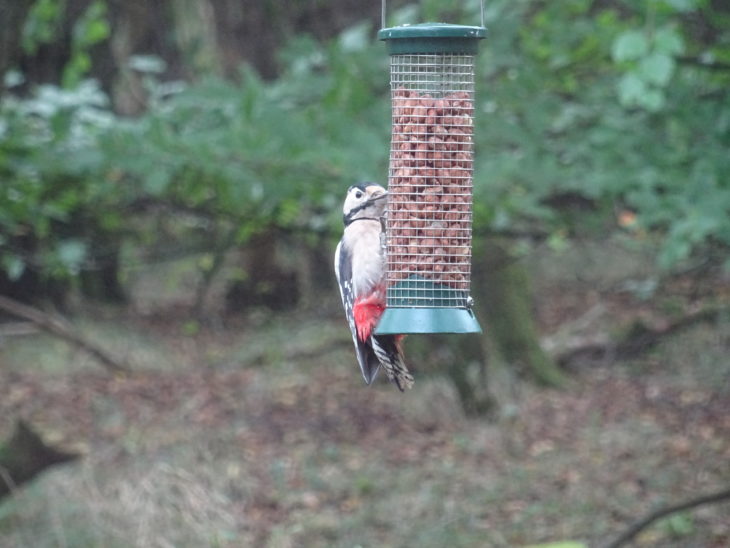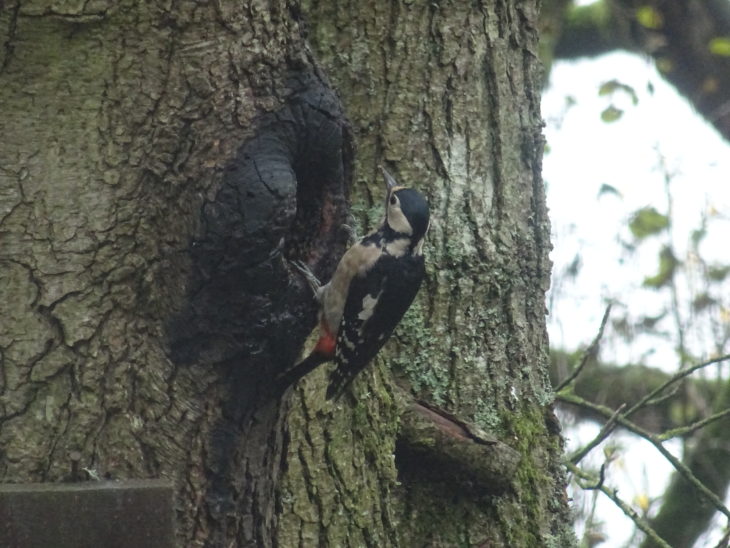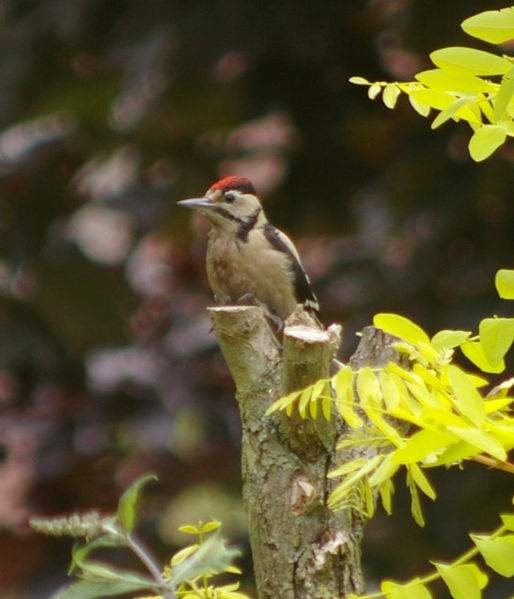Spot the Difference
We have been seeing the woodpeckers over the past couple of weeks which has been fantastic and a lot of our visitors enjoy watching their antics. We have very active great spotted woodpeckers on the reserve which can be seen at our feeding station, often enjoying the peanuts. They are interesting characters and can often be seen chasing each other from branch to branch. For those of you who are unfamiliar with great spotted woodpeckers they are roughly the size of a starling (23-26 cm in length with a 38-44cm wingspan). They are easily identified by the black and white plumage (sometimes referred to as “pied”), by the spotted pattern on the wings and a large white shoulder patch which is easily seen in flight. The striking crimson colour of the under tail coverts stands out against the white of the belly and chest.

There are some easy ways to tell the differences between male, female and juvenile great spotted woodpeckers: starting with the adult male who has a black head with a red stripe along their nape.

The adult females lack this and only have the black colouration continuing from the head.

Juveniles have a very distinctive red cap which covers the top of their head. I find it easy to remember this detail because it reminds me of a school boy’s cap. Before the post juvenile moult they also usually have spots at the end of their primary wing feathers. The white shoulder patch is also faintly barred.

Juveniles experience a partial moult in Summer/ Autumn time where they lose feathers from their body, tail and upper wing converts.
The juveniles will retain much of the wing feathers that sit closer to the base of the wing (secondary and tertiary feathers) but will lose the white tipped primary feathers for ones with black tips.
The red cap is also lost at this point and the black colouration of the adult form appears. Ringers will compare the amount of retained juvenile feathers to the adult plumage to determine the age of the woodpecker.
The woodpeckers tail feathers (rectrices) are also specially adapted to help it remain vertical while searching for insects on branches and trunks.
In other news, the beavers have felled a couple more trees and we are finding evidence of them coming up near the visitors centre during the night so it may be a good time to take advantage of the hides to try and catch a glimpse before winter sets in. We have been seeing a lot of goldeneye on the loch along with some young great crested grebes. The loch is still being visited by Canada geese and greylags.
At the feeders well are still seeing red squirrel activity, often running back and forth gathering nuts to cache for winter. We have had a few sightings of bramblings by visitors, intermingled with the chaffinches on the feeders. On Monday morning we had a sparrow hawk perched on a low branch near the feeding station which rightly spooked the smaller birds for a little while before the hawk moved on.
Join us this weekend to catch the woodpeckers and enjoy our Hedgerow Harvest family fun days where we will have loads of fun games and activities to do and learn about what berries, fruits and you can find this time of year. Remember to get more updates, follow us on twitter and facebook.
Christy
Visitor Centre Assistant
